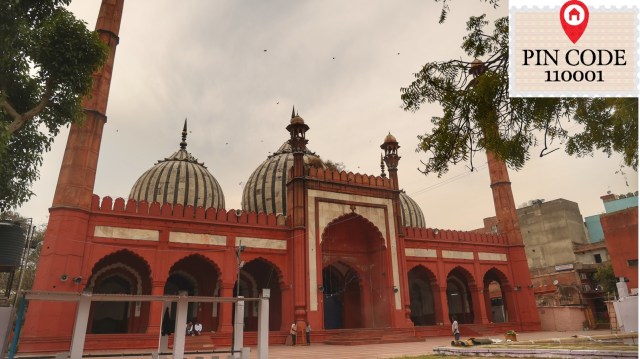How an 18th Century mosque in Daryaganj came to be named after a Mughal princess
It was in 1707 that the red sandstone and marble domed structure was commissioned by its namesake, Princess Zeenat-un-Nisa, the second daughter of Emperor Aurangzeb and his wife Dilras Begum.
 Princess Zeenat-un-Nisa commissioned the mosque in 1707 and named it Zeenat-ul-Masajid. (Express Photo by Tashi Tobgyal)
Princess Zeenat-un-Nisa commissioned the mosque in 1707 and named it Zeenat-ul-Masajid. (Express Photo by Tashi Tobgyal)Situated a stone’s throw away from Delhi’s iconic Jama Masjid is an 18th-century structure that could easily pass off as its replica — albeit a smaller version — at first glance. Built on the Khairati Ghat in Darya Ganj, in a time when the Yamuna used to flow past, Zeenat-ul-Masajid (beauty among mosques), or Ghata Masjid (cloud mosque) as it is also known, was turned into a bakery during British rule and even housed a school for a short time.
It was in 1707 that the red sandstone and marble domed structure was commissioned by its namesake, Princess Zeenat-un-Nisa, the second daughter of Emperor Aurangzeb and his wife Dilras Begum.
In its description of the mosque, the National Mission on Monuments and Antiquities website states that the structure is “built on an elevated platform and can be approached by a lofty staircase. It has three bulbous ribbed domes with a pinnacle on top. The main entrance has an inverted lotus design. The gateway has a multi-foliated arch, which is crowned by a battlement parapet and two minarets with an upturned floral pattern and pillar supporting cupola with eves… There is also a colonnaded verandah with foliated arch openings and majestic turrets with angular designs”.
Speaking to The Indian Express, author Sohail Hashmi explained how the masjid came to be known by two names. “Princess Zeenat commissioned this mosque and named it Zeenat-ul-Masajid. Her name meant beauty among women and she called this mosque, the beauty among mosques. (The plural of masjid is masajid). It is also known as the Ghata Masjid, a reference to its dome which has alternating bands of black and white like the monsoon clouds.”
“In 1857, when the British recaptured Delhi after crushing the rebellion, the mosque was converted into a bakery for British officers…,” he added.
Hashmi also spoke about his personal connection to the mosque: “There used to be a school in this masjid… many of these mosques were used as madrasas… My great-grandfather used to live near Akbarabadi mosque… after it was demolished, his family shifted to Zeenatul Masajid and he used to teach Urdu and Persian to the children of the poor in this mosque. Much later, in the 1960s, a primary school began operating here which later shifted to Humayun’s Tomb.”
In her book, Shahjahanabad: The Living City of Old Delhi, Rana Safvi wrote that Zeenat-un-Nisa, “like her elder sister, princess Zeb-un-Nisa” chose to stay single as no suitable match had been found for her. “The Princess was buried in the north of the mosque in a tomb built by her in her own lifetime but demolished by the British after the Uprising in 1857…,” Safi wrote.
On its unique structure, she said: “This mosque has seven arches, with a large one in the centre… The mosque itself is 150×60 feet and stands on a plinth of 4 feet from the courtyard. It has seven scalloped arched entrances in which are seven arched doorways facing the east. Over each doorway, except the middle one, are marble slabs– they are empty, but were probably meant for inscriptions…”
The mosque, she added, “occupied a unique location as its two lofty minarets could be seen from the river and it was the only mosque that came close to Jama Masjid. However, now it’s surrounded by buildings and has lost its uniqueness and much of its beauty too.”
Her book further stated that “Maulvi Zafar Hasan ( assistant superintendent with ASI) calls it Masjid Ghat because of its proximity to Khairati Ghat. It is possible the name got corrupted along with its connotations once the river shifted course… It is built completely of red sandstone and has three marble domes with black stone stripes in them. According to Sir Sayyid, the black stripes… are meant to ward off the evil eye and the shining golden finials on the domes seem to compete with the brightness of the sun..”







